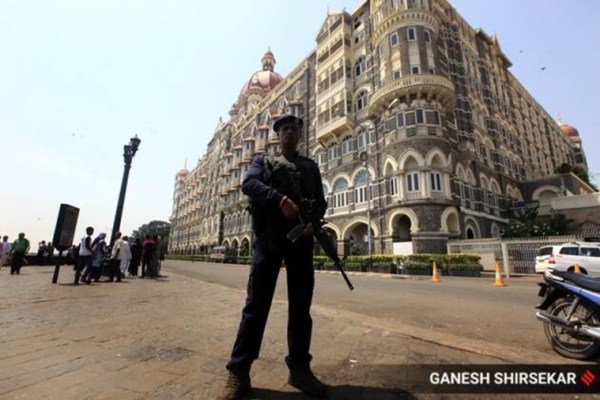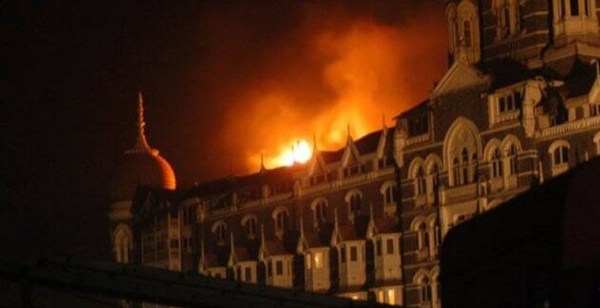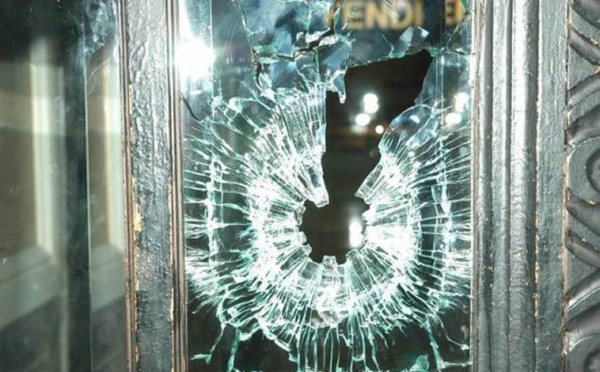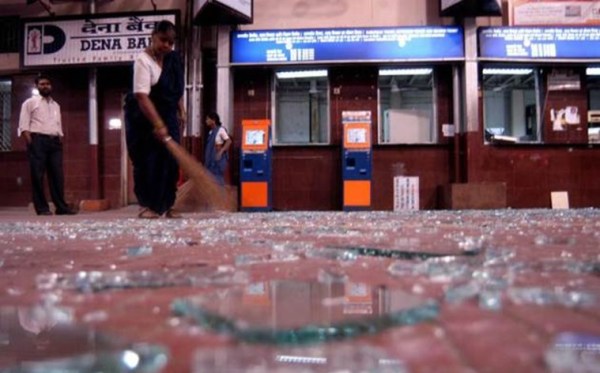Fourteen years ago, ten young men stormed into the financial capital of the country and for three consecutive days the city of Mumbai was caught in the grip of terror.
Armed militants had attacked a dozen locations in Mumbai — a hospital, railway station, a restaurant, a Jewish center and two luxury hotels, including Taj Mahal Palace. 166 people were killed and over 300 were injured in the attacks.
Starting November 26, for more than 60 hours, the Taj Mahal Palace Hotel was beseiged by four heavily armed militants.
Heavy smoke from Taj Mahal Hotel set on fire by terrorists. (Express photo by Ganesh Shirsekar)
Two among the four, Abdul Rehman Bada and Abu Ali, reached the main entrance of the Tower section, having planted a crude RDX bomb in front of the police post nearby. Armed with AK 47s, ammunition and grenades, they made their way to the lobby area, firing on anyone and everyone who caught their sight.
Subscriber Only Stories
The other two terrorists, Shoib and Umer, entered through the La-Pat door of the Palace and started shooting indiscriminately at the guests in the poolside area. By the poolside, four foreigners were the first to have been shot dead by the terrorists, along with security guard Ravindra Kumar and his dog, a Labrador Retriever.
The violence claimed lives of 166 people, including foreigners. Nine of the gunmen were killed in the counter-operation, while one survived.
 For more than 60 hours, the symbol of opulence in Mumbai lay at the mercy of four heavily armed terrorists. (Express photo by Ganesh Shirsekar)
For more than 60 hours, the symbol of opulence in Mumbai lay at the mercy of four heavily armed terrorists. (Express photo by Ganesh Shirsekar)
Around midnight that day, Mumbai Police surrounded the Taj. Many of the guests inside the hotel were huddled up by the staff into small rooms by this time. It was around 1 am that the central dome of the hotel was bombed and there was a massive fire in the building. The army and firemen arrived at the location following which the first round of evacuation took place.
Advertisement
Two groups were formed by marine commandos. The first group was out safely. The second group was spotted by the terrorists while they were making an exit. Gautam Singh, a tandoor chef at Taj, was one of those who were spotted and was shot dead.
 Fire engulfing the building (Express photo by Prashant Nadkar)
Fire engulfing the building (Express photo by Prashant Nadkar)
A team of 200 commandos reached Mumbai from New Delhi the following day (November 27) and took charge of the rescue operations at the Taj and Oberoi (another hotel that also came under attack). The government gave orders to storm the building. In the succeeding hours, evacuations took place in batches.
A fresh round of ground battle and a series of explosions ensued.
Advertisement
It was on November 29 that the Indian commandos announced that the Taj had been cleared of all militants.
 Bullet marks on the glass at Cafe Leopold in Colaba. Leopold café, the bar and restaurant on Colaba Causeway, is where Lashkar gunmen killed 11 people and injured 28 (Express photo by Vasant Prabhu)
Bullet marks on the glass at Cafe Leopold in Colaba. Leopold café, the bar and restaurant on Colaba Causeway, is where Lashkar gunmen killed 11 people and injured 28 (Express photo by Vasant Prabhu)
In October this year, External Affairs Minister S Jaishankar and US Secretary of State Antony Blinken raised the issue of listing planners of the 26/11 Mumbai terror attack as global terrorists at a UN counter-terrorism conference in Mumbai. Representatives of all 15 United Nations Security Council (UNSC) members were present at the conference held at the Taj Mahal Palace hotel, one of the sites of the 2008 terror attack.
 CST after the carnage of 26/11 Mumbai attacks. (Express photo: Pradeep Kocharekar)
CST after the carnage of 26/11 Mumbai attacks. (Express photo: Pradeep Kocharekar)
Senior officials of the Home Ministry played the audio clip of Sajid Mir, one of the attack planners. In the audio clip, he can be heard directing terrorists to shoot at Nariman House.
Sajid Mir’s listing as a global terrorist, an initiative of India and the US, was blocked by China at the UN in September this year.
Source: https://news.google.com/__i/rss/rd/articles/CBMiYGh0dHBzOi8vaW5kaWFuZXhwcmVzcy5jb20vYXJ0aWNsZS9jaXRpZXMvbXVtYmFpL3JlbWVtYmVyaW5nLTI2LTExLW11bWJhaS10ZXJyb3ItYXR0YWNrcy04Mjg4ODc5L9IBAA?oc=5

